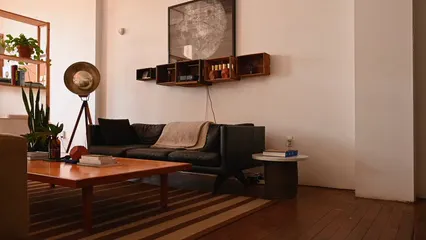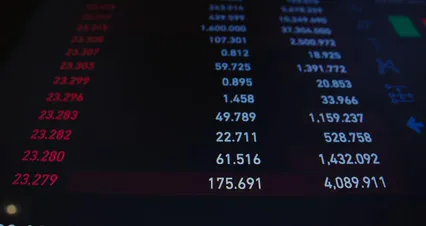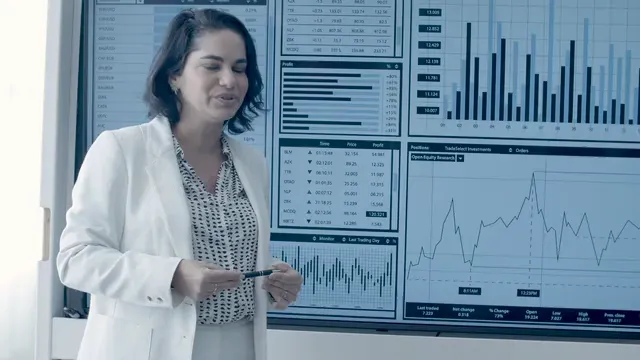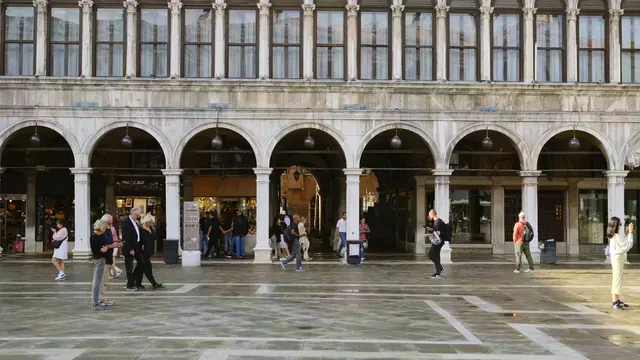Introduction
Omaha’s rental market is buzzing! With a diverse population and a range of housing options, it’s a hotspot for renters. The statistics of lease renewal rates in apartments in Omaha reveal critical insights into this dynamic market. Understanding these rates is essential for both property owners and tenants, shaping their decisions and expectations.
Lease renewals are crucial in the rental landscape. For landlords, a high renewal rate means stable income and lower turnover costs. For tenants, renewing a lease can mean continuity in their living situation, avoiding the stress of moving.
This article will cover fascinating statistics surrounding lease renewals, analyze the factors influencing these rates, and compare Omaha’s trends with national averages. With the recent statistic showing that 63% of tenants in Omaha opt to renew their leases, compared to nearly 62% nationally, it’s clear that this city is on the rise.
And speaking of rising, if you’re looking to make your apartment feel more like home, consider picking up a home organization set. Say goodbye to clutter and hello to serenity!

Understanding Lease Renewal Rates
What Are Lease Renewal Rates?
Lease renewal rates indicate the percentage of tenants who choose to extend their leases instead of moving. This metric is vital for landlords who want to maintain occupancy and minimize costs associated with turnover. A higher renewal rate often signals tenant satisfaction, market stability, and effective property management.
Current Statistics of Lease Renewal Rates in Omaha
Recent reports highlight that 63% of tenants in Omaha are opting to renew their leases. This is slightly above the national average of 62%. These figures place Omaha as the 13th most competitive rental market in the nation, according to RentCafe.com.
Omaha boasts an impressive occupancy rate of nearly 97% for market-rate rental units, surpassing the national average of 95.5%. Moreover, apartments in Omaha fill vacancies in an average of 29 days, quicker than the national average of 35 days. This competitive edge suggests that Omaha is an attractive option for renters, contributing to its impressive lease renewal statistics.
Understanding these statistics is essential for anyone involved in the Omaha rental market, whether they’re a tenant weighing their options or a landlord strategizing for the upcoming year. It’s clear that Omaha is not just another city; it’s a thriving rental hub with promising trends in lease renewals.
If you’re a tenant looking to enhance your living experience, why not invest in an air purifier for your home? Breathe easy and enjoy cleaner air while you’re at it!

For a deeper dive into the statistics of lease renewal rates in apartments in Omaha, check out this insightful article. statistics of lease renewal rates in apartments in omaha
Factors Influencing Lease Renewal Rates
Economic Factors
Omaha’s job market is booming! New jobs are cropping up, attracting many renters to the area. This influx significantly impacts lease renewal rates. As Ryan Spellman from Parkway Development notes, high home prices push people to stay in apartments longer. When buying a house becomes a challenge, renting becomes the go-to option.
This trend reflects a broader economic climate. As wages rise and employment opportunities increase, tenants feel more secure and likely to renew their leases. A stable job means tenants can plan for the future. If they’re satisfied with their rental situation, they’re more inclined to keep it going.
Additionally, Omaha ranks as the 13th most competitive rental market in the U.S. This status comes from various factors, including the demand for rental units and the availability of jobs. As more people flock to the city for work, the demand for rental properties increases, directly influencing the lease renewal rates.
In summary, the economic factors in Omaha create a supportive environment for lease renewals. With a robust job market and high home prices, renters find motivation to stay in their apartments longer.

Tenant Satisfaction and Community Building
Tenant satisfaction is a secret sauce for lease renewals! Happy tenants are more likely to stay put. But what drives this satisfaction? A strong sense of community plays a pivotal role.
Studies reveal that tenants with friends in their apartment complex are 8% more likely to renew their leases. That’s a significant bump! When residents forge connections, they feel a sense of belonging. This camaraderie makes moving seem less appealing.
Community events can foster these friendships. Whether it’s a barbecue or a game night, these gatherings create opportunities for residents to mingle. Property managers can enhance tenant experience by organizing regular events. This investment pays off, promoting a more cohesive community and boosting lease renewals.
Moreover, good communication is crucial. When tenants feel heard, they tend to have a higher satisfaction level. Property managers should reach out to residents regularly, addressing concerns before they escalate. This proactive approach can significantly increase the likelihood of lease renewals.
In essence, tenant satisfaction, driven by community connections, is a vital factor in lease renewal rates. A happy tenant is a returning tenant.

Market Dynamics
Omaha’s rental market is experiencing dynamic shifts. Vacancy rates are impressively low, with apartments filling in an average of 29 days. This is quicker than the national average of 35 days, indicating a strong demand for rental properties.
Currently, nearly 97% of market-rate rental units in Omaha are occupied. This figure surpasses the national average of 95.5%. Such high occupancy rates indicate a thriving rental market. Property owners benefit from fewer vacancies and more stable income.
Additionally, the competition among renters is fierce, with 17 prospective renters vying for every apartment available in Omaha. This competitive landscape encourages landlords to maintain attractive properties and foster positive relationships with tenants.
Furthermore, the high occupancy rates suggest that tenants are finding value in their living situations. As more people choose to rent in Omaha, the market dynamics shift, leading to increased lease renewal rates.
In summary, the low vacancy rates and high occupancy levels in Omaha create a favorable environment for lease renewals. The competitive nature of the rental market encourages both tenants and property owners to prioritize longer leases.

Comparisons to National Trends
National Average Lease Renewal Rates
When we look at lease renewal rates across the United States, a clearer picture emerges. Nationally, lease renewal rates hover around 62%. Meanwhile, Omaha boasts an impressive 63% renewal rate. This slight uptick may seem small, but it carries significant implications for landlords and property managers.
For property owners, higher renewal rates mean less money spent on turnover. You know, those pesky costs that come with cleaning, advertising, and showing a unit? If tenants stay longer, owners can breathe easier. It also indicates tenant satisfaction, which is a golden ticket in the rental business. Happy tenants lead to referrals, and who doesn’t love free marketing?
Moreover, this trend highlights Omaha’s growing reputation as a competitive rental market. Being ranked 13th in the nation among rental markets certainly isn’t a fluke. It suggests that Omaha is increasingly attractive to potential renters. As more people choose to stay put, landlords can expect stability in income and occupancy.
However, it’s not all rainbows and sunshine. The slight edge in Omaha’s renewal rate compared to the national average might reflect underlying issues, such as a lack of affordable housing or rising rents. As landlords, understanding these nuances is crucial for strategic planning. Keeping an ear to the ground on tenant needs can help mitigate these challenges.

Regional Differences
Now let’s take a broader look at regional differences in lease renewal rates across the U.S. Not every market is created equal. For instance, Florida’s rental markets are sizzling hot, with cities like Miami and Orlando experiencing fierce competition. In these areas, lease renewal rates can be as high as 70% due to strong economic growth and favorable weather. Who wouldn’t want to stay in the land of palm trees and sunshine?
Conversely, some markets are cooling down. In parts of the Midwest and Northeast, where economic conditions are less favorable, renewal rates can dip below 60%. This discrepancy can significantly impact landlords, as vacancies rise and competition stiffens.
Interestingly, many coastal cities have seen a surge in competition. These areas attract newcomers looking for a change of scenery and better job opportunities. Remote work has also shifted the landscape, allowing many to rent in areas that were previously not on their radar.
The takeaway? Lease renewal rates vary widely based on regional dynamics. Understanding where your market stands in relation to these trends can help landlords and property managers make informed decisions. Whether it’s adjusting rental prices or enhancing tenant engagement strategies, being proactive is key to thriving in today’s rental market.
In summary, while Omaha’s lease renewal rates are commendable, they are part of a larger tapestry of trends across the nation. Keeping a pulse on these statistics can empower landlords and property managers to adapt and succeed.

Strategies for Increasing Lease Renewal Rates
Increasing lease renewal rates is essential for landlords wanting to maintain steady income and minimize turnover costs. Fortunately, there are several strategies to keep tenants happy and encourage them to renew. Let’s break down some effective methods.
Effective Communication with Tenants
Proactive communication is key! Keeping the lines open helps address tenant concerns before they become major headaches. Regular check-ins show tenants that their comfort matters. Send out friendly reminders about renewal dates. A simple email can make a world of difference.
Consider implementing renewal reach-outs. This means reaching out to residents a few months before their lease ends. Ask about their experiences and any issues they might have. Addressing concerns early can lead to a smoother renewal process. After all, who wants to deal with a disgruntled tenant at the last minute?
Positive feedback is golden. Encourage tenants to share their thoughts about living in your property. Use this feedback to improve the community. When tenants feel heard, they’re more likely to renew. Create surveys or hold informal coffee chats to gather insights. You might be surprised by what they share!

Enhancing Tenant Experience
Happy tenants are loyal tenants! Improving tenant satisfaction should be your top priority. One great way to foster happiness is through community events. Host barbecues, movie nights, or seasonal parties. These gatherings create a sense of belonging. When tenants forge friendships, they’re more inclined to stick around.
Another crucial aspect is maintenance responsiveness. Quick responses to maintenance requests are vital for tenant satisfaction. No one enjoys waiting days for a leaky faucet to be fixed! Make sure your maintenance team is on top of requests. A well-maintained property shows tenants you care.
Consider implementing a resident referral program. Reward tenants who bring in friends or family to rent in your community. This approach not only builds community but also enhances tenant loyalty. Everyone wins when residents feel they have a stake in the neighborhood.
Competitive Pricing and Offerings
Competitive pricing can’t be overlooked. Research local rental rates to ensure your prices are attractive. If you’re slightly higher, justify it with outstanding amenities and excellent service. Highlight what makes your property stand out!
Flexible lease terms can also impact renewal rates. Offering options like shorter leases or month-to-month arrangements can lure in hesitant renters. If tenants feel they have options to suit their needs, they’re more likely to renew.
Additionally, consider seasonal promotions. Offering a discount on the first month’s rent for renewing tenants can be a game changer. It entices tenants to sign on the dotted line without thinking twice.
Lastly, engage in transparent property management practices. Make it easy for tenants to understand fees and lease agreements. Clear communication fosters trust, which can significantly enhance retention rates.
In summary, by focusing on communication, enhancing tenant experience, and maintaining competitive pricing, landlords can effectively increase lease renewal rates. It’s all about creating an environment where tenants feel valued and satisfied. Happy tenants lead to longer stays, and that’s a win-win for everyone!

Conclusion
In examining the statistics of lease renewal rates in apartments in Omaha, several key points emerge. First off, Omaha stands out with a 63% lease renewal rate. This is slightly above the national average of 62%. Such figures signify a healthy rental market and indicate tenant satisfaction.
For landlords, high lease renewal rates equate to less turnover. This stability translates directly to lower costs. Filling a unit can be a costly endeavor. Think about advertising, cleaning, and showing the apartment to potential tenants. When tenants choose to renew, landlords save time and money.
For tenants, renewing a lease often means continuity. It allows for stability in their living situations. Moving can be a hassle, complete with packing, logistics, and the stress of finding a new home. Renewing a lease can alleviate these concerns.
Now, if you’re a coffee lover, consider upgrading your daily brew with a quality coffee maker. Start your day right and enjoy the aroma of freshly brewed coffee in your cozy apartment!
The significance of these lease renewal statistics cannot be overstated. They provide insights into the overall health of the rental market in Omaha. They guide landlords in making informed decisions about property management and tenant engagement. For tenants, understanding these statistics can help them navigate their rental choices better.
As the rental landscape in Omaha evolves, both landlords and tenants should consider these factors in their decisions. Keeping an eye on lease renewal trends can help both parties optimize their rental experiences.

FAQs
What is the average lease renewal rate in Omaha?
The average lease renewal rate in Omaha is currently 63%. This rate is slightly above the national average of 62%. It reflects the city’s competitive rental market and tenant satisfaction levels.
How do lease renewal rates impact landlords?
Lease renewal rates have significant financial implications for landlords. A high renewal rate means fewer vacancies. This results in reduced turnover costs, including advertising, cleaning, and showing units. It also suggests that tenants are satisfied, which can lead to referrals and positive word-of-mouth. Conversely, low renewal rates may indicate tenant dissatisfaction and lead to increased costs associated with finding new renters.
What can tenants do to negotiate better lease renewal terms?
Tenants can negotiate better lease renewal terms by doing a bit of groundwork. First, they should research local rental prices to understand the market. If they find comparable apartments at lower prices, they can leverage this information in discussions with their landlords. Communication is key. Tenants should express any concerns about the current lease terms and suggest reasonable adjustments. Building a good relationship with the landlord can also help. After all, a happy tenant is more likely to stay!
How is the rental market in Omaha expected to evolve?
The rental market in Omaha is poised for growth. With job creation and a steady influx of new residents, demand for rental units will likely increase. Economic conditions, such as high home prices, encourage people to rent instead of buying. As a result, lease renewal rates may continue to trend positively. Landlords will need to adapt to these shifts by enhancing tenant experiences and ensuring their properties remain competitive.
Please let us know what you think about our content by leaving a comment down below!
Thank you for reading till here 🙂
All images from Pexels




